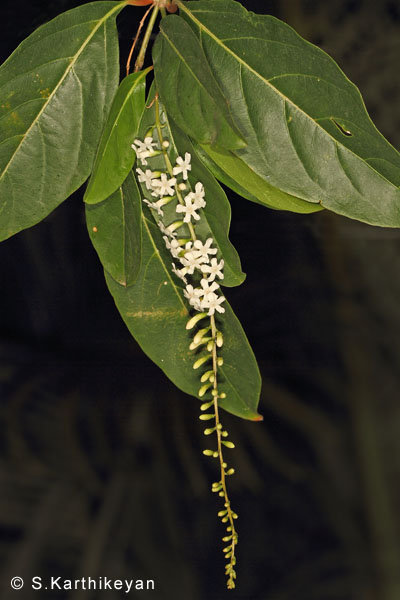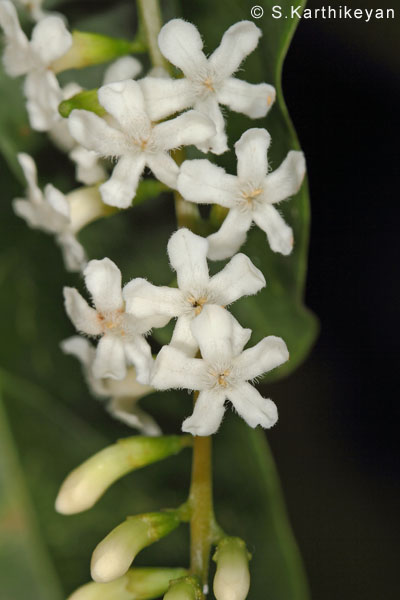Every day that I have walked into my office building this week, I have been welcomed by a mild, enjoyable and a heavenly aroma. Out of curiosity my eyes wandered and espied the tiny white flowers borne on long spikes. I remember noticing that this tree, near the entrance, was almost bare just a month ago. Today, it stands in full glory with the dark green leaves providing a lovely background to the equally beautiful and delicate inflorescence. Indeed, a delectable transformation!
What was even more interesting was that the flowers were attracting a lot of butterflies. The Blue Tigers and Crows that are on their annual migration seemed to find the flowers worthy of a visit before they continued their journey. The honey bees were busy visiting the flowers too. Other butterflies like the Common Jezebel, Common Jay and the Tailed Jay were also attracted to the flowers.
The Fiddlewood tree Citharexylum spinosum, of which there are very few in the city of Bangalore, was the source of the fragrance and the activity. I am personally aware of very few trees – one in my office premises, one in Basavangudi (not far from Ramakrishna Ashram circle) and a couple of trees in the campus of the Indian Institute of Science.
The tree is a native of tropical America and West Indies. As can be guessed, it gets its name from the fact that the wood is used in making musical instruments.
The Fiddlewood is not a very big tree. It grows to about 30-40 feet tall and does not have a spreading canopy. It can also be grown in spaces with little or no shade. All this, along with a long flowering season and fragrant flowers, makes the tree an excellent candidate for landscaping purposes and as an avenue tree. The tree can be propagated from seeds and from semi-hardwood cuttings.
So, the next time you find one of these trees, pause for a moment – appreciate the fragrance of the flowers or watch the butterflies visiting them. The time and effort will be well worth it and also a welcome relief to any urbanite.

